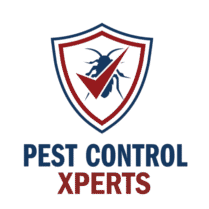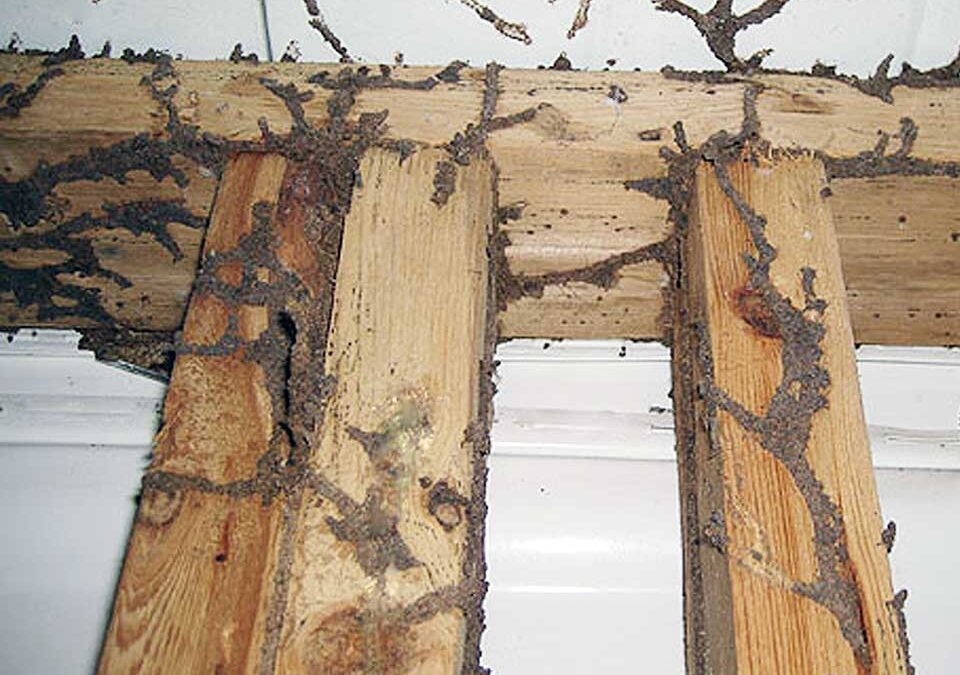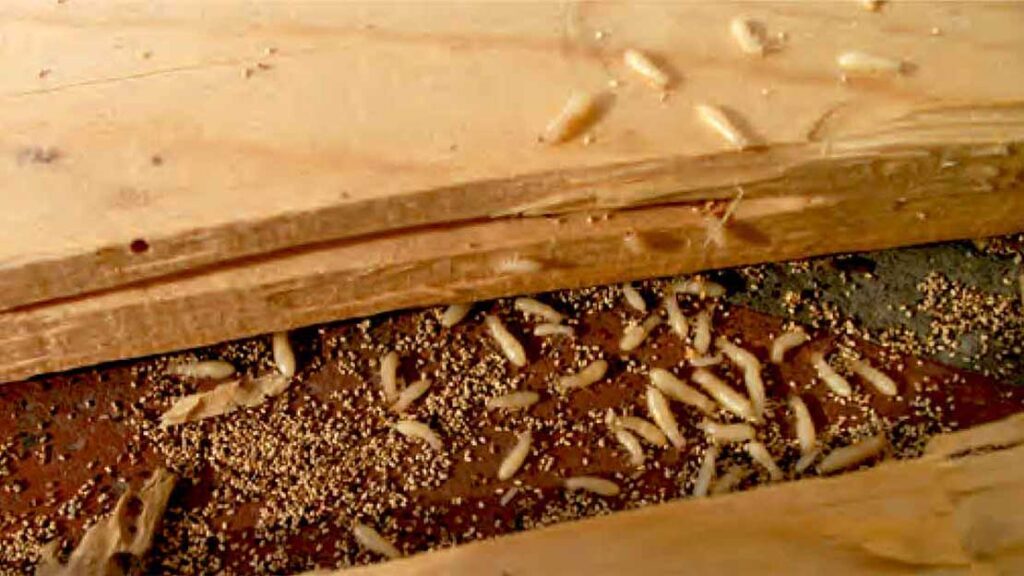Termite Removal in Ohio
Serving residences and businesses throughout Austintown, Canfield, Deerfield, and Elkton
Termites remain a major threat to residential and commercial structures, quietly consuming wood supports, floors, and other cellulose-rich materials from within. Because they often work out of sight, owners may not realize they need termite removal until serious damage appears. This can lead to costly repairs and ongoing stress if the problem continues undetected. In Ohio locations such as Austintown and nearby communities including Canfield, Deerfield, and Elkton, termites typically invade buildings seeking moisture, warmth, and accessible wood sources. If left untreated, they can weaken frames, cause walls to buckle, or compromise entire rooms.
Pest Control Xperts provides professional termite removal in Ohio, focusing on thorough inspections, safe product use, and long-term prevention. Our exterminator in Austintown has extensive experience detecting termite colonies, applying the right treatments for each scenario, and advising owners on preventing re-infestations. This service page highlights why termites appear, the signs of infestation, the risks of delaying treatment, and how professional solutions address each life stage of termites. By responding quickly and relying on proven exterminator techniques, owners can protect their investments from deeper structural harm.
Reasons Termites Appear in Ohio
Termites thrive in environments offering mild temperatures, dampness, and plentiful wood to feed on. Although Ohio experiences cold winters, heated indoor areas and moist basements or crawl spaces create the conditions termites need to survive year-round. Below are frequent causes of termite infestations in Austintown, Canfield, Deerfield, and Elkton:
- Moisture Problems
Termites favor damp wood because it is easier to consume. Leaky pipes, basement humidity, or poor drainage around foundations produce moisture that draws subterranean termites closer. Even minor leaks in roofing or siding can allow water inside, softening wood beams or framing. - Direct Wood-to-Soil Contact
Many subterranean termites nest in soil, building mud tubes to travel upward into structures. If siding, deck posts, or fences directly contact the earth, termites can move in without barriers. Decking that rests on bare ground or unprotected wooden steps can invite hidden termite entry. - Foundation Cracks and Gaps
Termites squeeze through narrow openings in foundations, searching for wood beams. These pests often exploit expansion joints, settling near subflooring or behind walls once they find cellulose. Owners who overlook minor foundation cracks might unknowingly grant termites free access. - Late or Missed Detection
Termites eat wood from the inside, leaving the outer surface relatively untouched. Owners might only notice sagging floors or spongy drywall after extensive feeding. Missing early warning signs allows colonies months or even years to expand unseen. - Transported Infested Materials
Drywood termites, though less common in Ohio, may arrive through shipments of wooden furniture or items from infested regions. If owners do not inspect or treat these items before placing them indoors, new termite populations can form. - Seasonal Swarms
Certain termite species produce winged swarmers that emerge in warm weather to start new colonies. Spotting small, winged insects near windows or light fixtures can indicate active termites looking to establish a nest. Ignoring swarmers often leads to more costly damage later.
Understanding these triggers emphasizes why prompt inspections and addressing moisture issues can guard against termite activity. If owners suspect termites, consulting a professional exterminator in Austintown is critical.
Signs of Termite Infestation
Termites remain one of the more elusive pests, yet they leave behind specific evidence of their presence:
- Mud Tubes
Subterranean termites construct pencil-thin tunnels of mud and saliva along foundations, basement walls, or support posts, maintaining moisture as they move between soil and wood. Seeing these tubes is a strong indicator of an active colony. - Discarded Wings
During termite swarming season, reproductive termites shed wings after mating. Piles of small, translucent wings near windowsills, doorframes, or light fixtures usually point to a nearby colony. - Hollow-Sounding Wood
Tapping wooden beams, floors, or trim that sound hollow or appear weak can signify hidden termite tunnels. In severe cases, the outer surface might remain intact while interior wood is severely compromised. - Buckling or Warped Surfaces
Termite feeding introduces moisture and weakens wood, potentially causing floors to sag or paint to bubble and peel. While moisture damage alone can have similar effects, combining this clue with other warnings justifies a termite inspection. - Frass or Pellets
In drywood termite infestations, small, pellet-like droppings accumulate under infested items. Though less common in Ohio, owners finding such pellets should suspect a termite presence in furniture or attic beams. - Visible Termites
While most termites hide from light, owners may occasionally see swarming termites or worker termites if disturbed. Workers are pale and soft-bodied, often mistaken for white ants. Confirmation of even a few individuals calls for professional diagnosis.
Delaying action once these clues appear can let termite colonies expand, increasing the likelihood of expensive structural repairs. Early detection with the help of a qualified exterminator in Austintown prevents more severe outcomes.
Why Timely Termite Removal in Ohio Is Essential
Termites pose unique threats compared to other pests, given their appetite for wood and ability to remain hidden. Ignoring or overlooking early hints can invite:
- Widespread Structural Harm
Over months or years, termites hollow out support beams, weakening the building’s overall integrity. Repairing large sections of framing, subflooring, or window frames adds substantial costs. Some damage may require invasive reconstruction. - Escalating Treatment Expenses
Small, localized colonies typically require simpler, more affordable solutions. If owners wait until multiple areas show damage, comprehensive treatments and repairs become more time-consuming and expensive. - Spread to Neighboring Spaces
In multi-unit housing, townhouses, or commercial complexes, subterranean termites travel along shared foundations or interconnected soil. Failing to address an infestation might allow termites to relocate into adjacent units. - Failed Inspections
Homebuyers and lenders often demand termite clearance for real estate transactions. Buildings with untreated infestations face potential appraisal declines or complicated closing processes. The longer termites remain, the more an owner risks losing value. - Increased Anxiety for Residents
Knowing parts of a building are being eaten away can fuel stress. This unsettled feeling may escalate if owners notice daily changes, like newly exposed holes or more frequent sightings of winged termites.
Consulting a termite exterminator in Austintown as soon as suspicion arises saves property owners from these problems. Professional interventions protect structural stability and occupant peace.
Professional Termite Removal vs Do-It-Yourself Efforts
Though numerous do-it-yourself termite products exist, heavy or hidden infestations require a specialized approach that addresses entire colonies:
- Accurate Species Identification
Trained professionals determine if subterranean termites, drywood termites, or another species is present. Each type may demand distinct methods. Drywood termites may need fumigation or localized treatments, while subterranean colonies often rely on baiting or liquid barriers. - Comprehensive Inspection Tools
Technicians check foundations, crawl spaces, basements, or attic beams, sometimes using moisture meters or other devices. This systematic approach uncovers concealed mud tubes or damaged wood that a casual inspection misses. - Liquid Termiticide Barriers
A popular technique for subterranean termites involves trenching around foundations, then applying liquid termiticides. This creates a barrier that kills or repels termites attempting to move between soil and wood. Correct application ensures extended protection. - Bait Systems
Bait stations installed around a building’s perimeter attract foraging worker termites with slow-acting toxins. Once consumed, these toxins spread to other colony members, eventually killing the queen and nest. Professionals monitor stations and replace baits as needed. - Safe Product Distribution
Overusing pesticides can harm people, pets, or beneficial organisms. A licensed exterminator chooses formulations that eliminate termites while minimizing adverse effects on the environment. Precise placement also lowers potential exposure for residents. - Follow-Up and Warranties
Certain termite treatments require periodic checks, especially bait systems. Many pest control firms guarantee their results, returning if new activity surfaces soon after service. Owners thus gain ongoing support rather than a single, uncertain DIY effort.
Pest Control Xperts: Termite Removal in Ohio
Pest Control Xperts has dedicated termite solutions for structures in Austintown, as well as Canfield, Deerfield, and Elkton. We begin with a detailed approach shaped by proven industry practices:
- Comprehensive Property Assessment
Our exterminator walks the perimeter, basement, or crawl space, checking for mud tubes, winged termite evidence, or rotted wood. We note moisture sources, foundation cracks, or wood-soil contact. Gathering this data clarifies how far termites have spread and which strategies will work best. - Identification of Species
Most Ohio infestations involve subterranean termites. Still, we confirm whether drywood or Formosan termites (rare but possible) are to blame. Understanding the species influences whether we lean more on bait systems or direct wood treatments. - Personalized Treatment Recommendation
For subterranean termites, we may employ perimeter trenching, rod injections of liquid termiticide, or perimeter bait stations. Drywood termites could need spot fumigation or localized injections. In some cases, combining liquid barriers and baits produces optimal coverage, blocking soil routes while systematically wiping out the colony. - Careful Product Usage
We apply termiticides or set bait stations in line with manufacturer guidelines, ensuring safety for humans, pets, and landscaping. Liquid treatments bond with soil, offering multi-year protection from new termite arrivals, while baits pass toxins through the colony. - Reducing Conducive Conditions
If drainage or dampness around a foundation or basement fosters termite interest, we suggest fixes. Better grading, gutter extensions, or dehumidifiers remove moisture. Removing direct wood-to-soil contact, such as wooden siding touching the ground, also reduces termite pathways. - Monitoring and Follow-Up
Depending on the chosen approach, we schedule follow-up inspections to confirm termite activity has ended. Bait stations require periodic checks, and owners should remain alert for mud tubes or discarded wings. If new evidence emerges, we adjust or reinforce treatments promptly.
How Owners Can Prevent Future Termite Issues
Alongside professional termite removal, several proactive measures help protect against reinfestation:
- Limit Wood-Soil Contact
Keep wooden deck posts or siding a few inches above the soil line. Use concrete footings if possible. Storing firewood off the ground and away from walls also deters termite exploration. - Fix Leaks and Moisture Problems
Repair leaky pipes or roofs, unclog gutters, and ensure downspouts direct water away from foundations. Using dehumidifiers or proper ventilation in crawl spaces prevents dampness that attracts subterranean termites. - Inspect Regularly
Scheduling yearly checks for mud tubes, hollow-sounding wood, or swarmers helps catch potential termite activity early. Catching them before severe damage saves on repair costs. - Use Treated Wood Outdoors
Deck boards, fence posts, or landscaping ties made of pressure-treated or termite-resistant wood last longer without letting termites eat through. This step can discourage termites from invading near building exteriors. - Prevent Direct Access
Sealing foundation cracks, roof or siding gaps, and around utility entries forces termites to confront treated barriers. Such exclusion complements any existing liquid or bait system. - Monitor Surroundings
In multi-unit complexes, if neighbors identify termites, yours could be next. Communicating with adjacent properties or landlord associations fosters coordinated efforts to keep termites from traveling across property lines.
Why Austintown Residents Choose Pest Control Xperts
Amid the many choices for termite control, Pest Control Xperts remains a trusted provider for multiple reasons:
- Local Expertise
We know how Ohio’s weather, soil conditions, and building designs contribute to termite presence. Serving Austintown, Canfield, Deerfield, and Elkton means we bring region-specific insights to each project. - Trained Professionals
Our exterminator staff studies termite behaviors, advanced treatment methods, and product safety guidelines thoroughly. Staying updated on innovations helps us adapt solutions for each unique scenario. - Effective and Safe Solutions
We combine proven termiticides, monitored bait stations, or specialized injection methods. Each method is applied precisely, reducing potential risk to individuals or the environment. - Clear Communication
We explain how to get rid of termites in Austintown by discussing options, expected timelines, or occupant preparations before treatments. Clients can ask questions and trust us to clarify each step. - Follow-Up and Warranty
Many termite treatments include periodic reevaluation or warranties. If termites reappear within a certain timeframe, we revisit and correct any overlooked sites. This commitment ensures longer-term peace of mind. - Prevention Focus
In addition to eradicating active colonies, we reveal conducive conditions encouraging termite entry. When owners address these structural or moisture problems, they help keep termites away for good.
Contact Pest Control Xperts for Termite Removal in Ohio
Any sign of termites be it mud tubes, discarded wings, or hollow-sounding wood calls for immediate attention to prevent further damage. Residents or managers in Austintown, Canfield, Deerfield, and Elkton can rely on Pest Control Xperts for thorough termite removal in Ohio. Our exterminator inspects all relevant zones, confirms which termite species are active, and recommends targeted treatments that combine baits, liquid barriers, or both to destroy entire colonies.
Because termites spread quietly, seeking help early spares owners from costly repairs or stress. After addressing current infestations, we remain available for follow-ups or annual checks to detect any reinfestation signs. Owners also gain tips on reducing wood-soil contact, fixing leaks, or improving drainage around foundations to deny termites the moisture they crave. By working together, we ensure properties remain termite-free for the long term.
Act now if you suspect termite activity on your property. Contact Pest Control Xperts to learn more about how to get rid of termites in Austintown or to set an appointment for a professional inspection. We welcome questions and tailor our approach to each building’s design, occupant usage, and infestation scope. Regain security knowing your wooden structures are safe from unseen termite damage, thanks to the diligent efforts of Pest Control Xperts.




